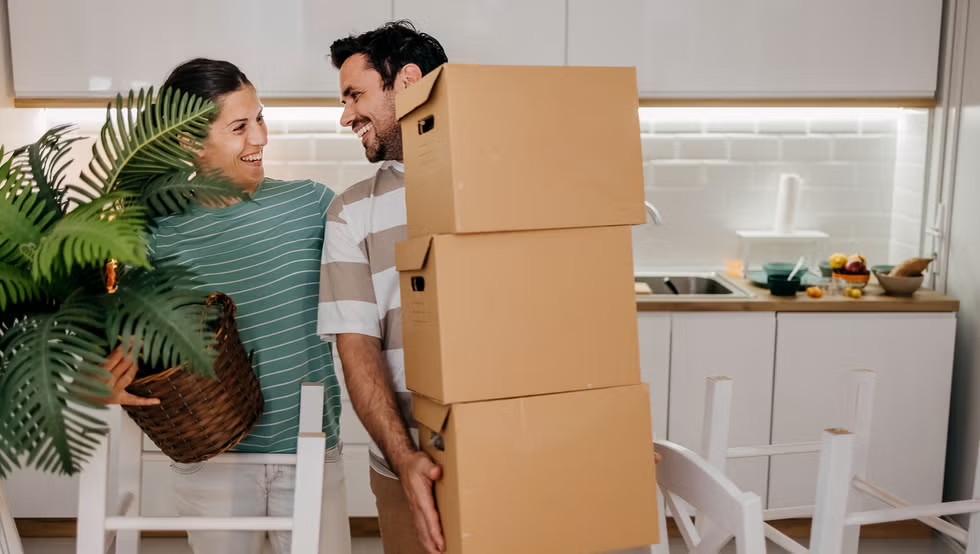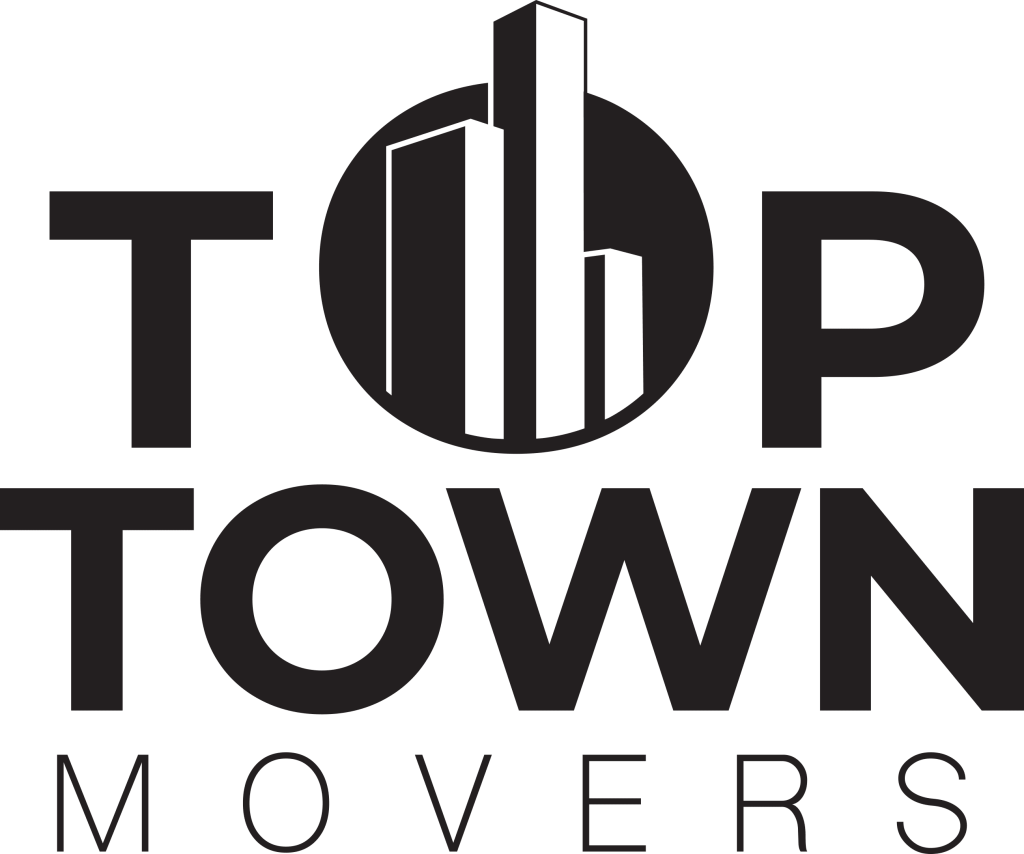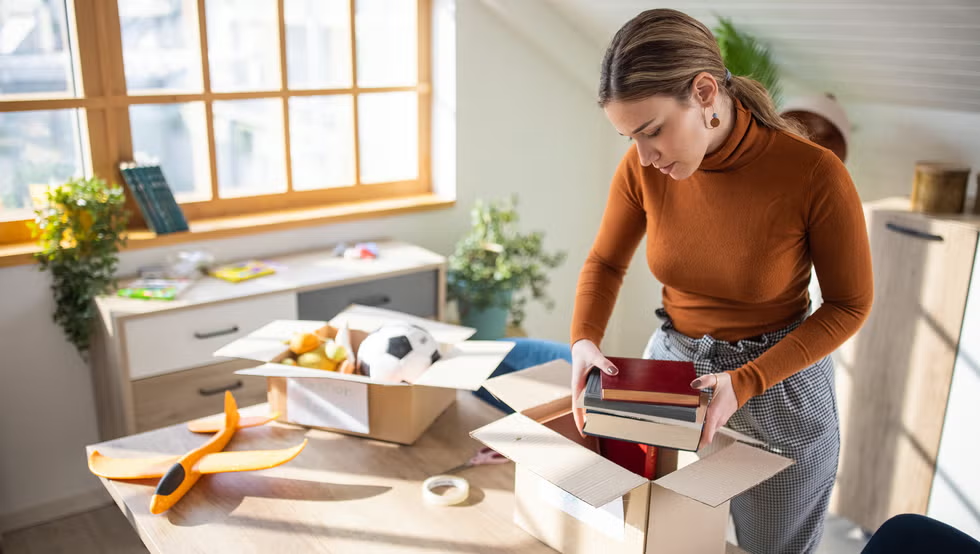The thought of moving can be overwhelming. Suddenly, every drawer, closet, and forgotten corner of your home seems to overflow with possessions. The sheer volume of “stuff” can make the entire process feel insurmountable before you even tape up your first box. But what if you approached decluttering with the intensity and purpose of an impending move, even if you’re not planning to relocate anytime soon? This isn’t just about tidying up; it’s about fundamentally transforming your living space, reducing stress, and reclaiming your home.
At Top Town Movers, serving Ontario and specifically the North York area, we see firsthand how much easier and more affordable moves become when clients have embraced the power of decluttering. This guide will teach you exactly how to declutter like you are moving, aiming to shed 500+ items from your home, regardless of whether you’re actually changing addresses.
- Learn More >>>>The BEST House Moving Tips (and Mistakes to Avoid)!
How To Declutter Like You Are Moving
Why Declutter “Like You Are Moving”?
The “moving mindset” is a powerful catalyst for decluttering. When a move is imminent, every item in your home is scrutinized. You ask yourself:
- Do I really need this?
- Is it worth the effort to pack, transport, and unpack?
- Will it fit in my new space?
- Does it align with the life I want to live in my new home?
This intense level of scrutiny cuts through emotional attachment and procrastination. It forces swift decisions and encourages you to let go of items that are no longer serving you. Applying this mindset even when you’re staying put can free up space, reduce mental clutter, and streamline your daily life. It’s like a spring cleaning on steroids, preparing your home for a lighter, more functional future.
- Learn More >>>>Packing & Additional Moving
The Decluttering Arsenal: Tools and Mindset
Before you dive in, gather your supplies and prepare your mental state:
- Boxes/Bags: Label clearly: “Keep,” “Donate,” “Sell,” “Recycle,” “Trash.”
- Markers: For labeling.
- Timer: Work in short, focused bursts (20-30 minutes) to avoid burnout.
- Music/Podcast: Something to keep you energized.
- Water & Snacks: Stay hydrated and fueled.
- “Maybe” Box: For items you’re truly undecided about (but with a strict deadline for review).
- Digital Camera: To take “before” and “after” photos for motivation.
- Positive Attitude: Remind yourself of the benefits of a clutter-free home.
The Core Strategy: Room by Room, Category by Category
Don’t attempt to declutter your entire house at once. This leads to overwhelm. Instead, tackle one room at a time, and within that room, one category at a time.
Phase 1: The Easy Wins (The First 100+ Items)
Start with areas that have less emotional attachment and are quick to process. This builds momentum.
- Expired/Unused Items:
- Kitchen: Spices, condiments, canned goods past their prime, dried pasta, ancient baking supplies. (Aim for 10-20+ items)
- Bathroom: Expired medications, old makeup, nearly empty shampoo bottles, crusty lotions. (Aim for 10-20+ items)
- Pantry: Stale snacks, forgotten ingredients, random plastic containers without lids. (Aim for 10-20+ items)
- Duplicates:
- Kitchen: Multiple spatulas, too many mugs, redundant kitchen gadgets. (Aim for 5-10+ items)
- Tools: Extra screwdrivers, wrenches, duplicate measuring tapes. (Aim for 5-10+ items)
- Pens/Pencils: Those dried-up pens and pencils you’ll never use. (Aim for 10-20+ items)
- Damaged/Broken Items:
- Clothing: Socks with holes, stained t-shirts, worn-out shoes. (Aim for 10-20+ items)
- Home Decor: Chipped vases, broken picture frames, faded throw pillows. (Aim for 5-10+ items)
- Electronics: Old chargers, defunct cables, broken small appliances. (Aim for 5-10+ items)
- Paper Clutter:
- Old mail, expired coupons, duplicate instruction manuals, old receipts you don’t need. (Aim for 20-50+ items)
- Entertainment:
- Old magazines, newspapers, promotional flyers. (Aim for 10-20+ items)
Tally: You should be well over 100 items by now!

- Learn More >>>>Tips to Make Moving Less Stressful
Phase 2: Diving Deeper – The “Moving Mindset” in Action (The Next 200+ Items)
Now, apply the full how to declutter like you are moving intensity to more significant categories.
Kitchen (The Heart of the Home – and Clutter!)
- Utensils: Keep only what you use regularly. Do you really need 12 wooden spoons? (5-10 items)
- Cookware/Bakeware: Pots and pans that are warped, scratched, or rarely used. Extra baking sheets. (3-5 items)
- Small Appliances: Blender you haven’t touched in years, bread maker, juice extractor. (1-3 items)
- Dishes/Glasses: Chipped plates, too many “free” glasses, mismatched sets. (5-15 items)
- Food Storage: Mismatched lids and containers, warped plastic. Keep only what pairs up. (10-20 items)
- Linens: Old dishtowels, stained tablecloths. (5-10 items)
Clothing (A Major Clutter Hotspot)
- The “One Year” Rule: If you haven’t worn it in a year, seriously consider letting it go.
- Fit: Clothes that are too big/small, even if you plan to change size.
- Condition: Pilled sweaters, faded t-shirts, ripped jeans.
- Style: Items that no longer reflect your current style or lifestyle.
- Quantity: Do you need 15 white t-shirts? Be realistic.
- Shoes & Accessories: Worn-out shoes, single earrings, broken necklaces, scarves you never wear.
(Aggressively aim for 50-100+ clothing items)
Books, Movies, Music (Digital vs. Physical)
- Books: Books you’ve read and won’t reread, books you started and didn’t finish, books you bought but won’t read. Consider donating to local libraries or little free libraries.
- CDs/DVDs: If you stream everything, these are likely obsolete.
- Video Games: Games you’ve outgrown or no longer play.
(Aim for 20-50+ items in this category)
Linens (Bedroom & Bathroom)
- Towels: Frayed, stained, rough towels. Keep enough for guests, but no excess.
- Bedding: Mismatched sheets, old comforters, pillows that have lost their support.
- Throws/Blankets: Too many decorative throws that just collect dust.
(Aim for 10-20+ items)
Toiletries & Medicine Cabinet
- Old Products: Samples you’ll never use, lotions you disliked, dried-up nail polish.
- Hair Products: Half-empty bottles of products you tried and didn’t like.
- Medicine: Expired or unused prescription and over-the-counter medicines (dispose of safely!).
(Aim for 15-30+ items)
Paper & Documents (Beyond the Obvious)
- Old bills (once scanned or paid), old warranties for items you no longer own, excessive greeting cards, children’s old school papers (keep only true masterpieces).
- Tax documents: Keep 7 years, then shred.
(Aim for 30-50+ items)
- Learn More >>>>furniture removal caledon
Garage/Basement/Storage Areas (The Land of Forgotten Treasures)
- Old Paint Cans: Partially used, dried-up, or the wrong color.
- Tools: Rusty, broken, or duplicate tools.
- Sports Equipment: Unused golf clubs, deflated balls, old tennis rackets.
- Holiday Decorations: Broken ornaments, faded garlands, lights that don’t work.
- Old Furniture: Pieces you plan to fix “someday” but never do.
- Boxes of “Stuff”: The true unknown territory. Open them all! If you haven’t needed it since it was packed, you likely don’t need it at all.
(This area can yield 50-100+ items on its own!)
Tally: You should easily be at 300-400+ items by this point!
Phase 3: The Hard-Core Decluttering (Reaching 500+ and Beyond)
This phase requires real commitment and a critical eye.
Sentimental Items:
This is where the “moving mindset” is crucial. While sentimental items are important, you cannot keep every sentimental item.
- Photos: Digitize old photos to save space. Keep only your absolute favorites in physical albums.
- Mementos: Old concert tickets, dried flowers, trinkets. Can you take a photo and let the physical item go?
- Children’s Art/Schoolwork: Create a “best of” folder or memory box. Don’t keep every single drawing.
- Gifts: Just because it was a gift doesn’t mean you have to keep it, especially if you don’t like or use it. The sentiment is in the giving, not the object.
(This is about quality over quantity. Aim to reduce by 20-50 items in this category by being highly selective)
Decor and Knick-Knacks:
- Items that no longer fit your aesthetic, dusty figurines, too many throw pillows, artwork you no longer love.
- Items that just collect dust and don’t add joy or function.
(Aim for 10-30 items)
Kids’ Toys & Games (If Applicable):
- Broken toys, missing pieces, outgrown toys, too many of the same type (e.g., 5 teddy bears).
- Games with missing parts.
- Outdated electronics.
(This can be a goldmine for 20-50+ items)
Hobby Supplies:
- Craft supplies for hobbies you no longer pursue.
- Partial skeins of yarn, dried-up paints, half-finished projects.
- Old sports equipment no longer used.
(Aim for 10-30 items)
Miscellaneous:
- Excessive plastic bags from shopping.
- Takeout menus you can find online.
- Empty gift boxes and bags “just in case.”
- Old cell phones, chargers, and accessories for devices you no longer own.
(Another 20-50+ items here)
Tally: If you’ve been thorough, you’ll easily reach and surpass 500 items!

- Learn More >>>>The Best Moving Boxes to Make Life Easier
What to Do With Your “Gone” Items
Getting rid of items is just as important as deciding to let them go. Have your labeled boxes ready:
- Donate: Research local charities, thrift stores (like Salvation Army, Goodwill), or specific organizations that accept particular items (e.g., homeless shelters for blankets, animal shelters for towels). Schedule a pick-up if possible, or plan a drop-off.
- Sell: Use online marketplaces (Facebook Marketplace, Kijiji, eBay) for higher-value items. Consider a garage sale if you have many things.
- Recycle: Separate paper, plastic, glass, and metal according to local North York or Ontario recycling guidelines.
- Trash: For items that are truly unusable or beyond repair/recycling.
Maintaining Your Decluttered Home
Decluttering is not a one-time event; it’s an ongoing process.
- One In, One Out Rule: When you buy something new, get rid of something old in the same category.
- Regular Mini-Declutters: Dedicate 15-30 minutes each week or month to a small decluttering session in a specific area.
- Adopt a Mindful Consumption Habit: Think before you buy. Do I really need this? Where will it live?
- Seasonal Purges: Twice a year (e.g., spring and fall), go through clothing and seasonal items.
- Learn More >>>>How to Pack for a Move
How Top Town Movers Can Help When You Do Move
While this guide helps you embrace how to declutter like you are moving for a lighter lifestyle, when the time truly comes to relocate, Top Town Movers is here for you. A decluttered home means:
- Fewer Boxes: Saving on packing supplies and time.
- Reduced Moving Costs: Less to transport often means lower fees.
- Faster Packing & Unpacking: Our professional teams can work more efficiently.
- Easier Organization in Your New Home: Moving only what you truly need makes settling in a breeze.
Whether you’re preparing for a future move in North York or simply striving for a more organized home in Ontario, applying the “moving mindset” to decluttering is the most effective way to achieve a lighter, more functional, and stress-free living space. Start today, and watch those “things gone” numbers climb!

































